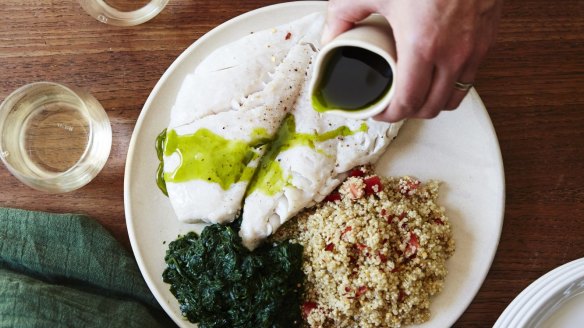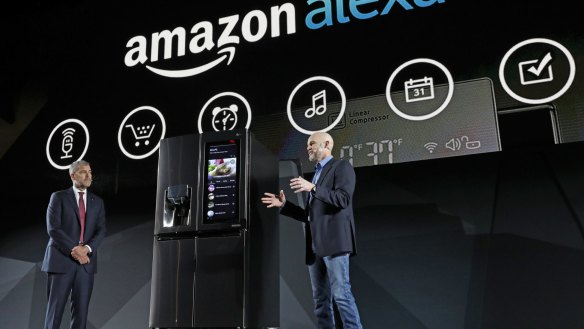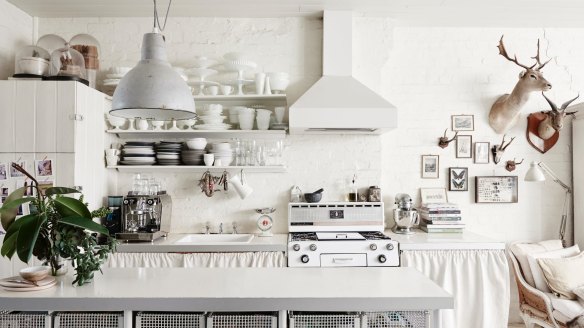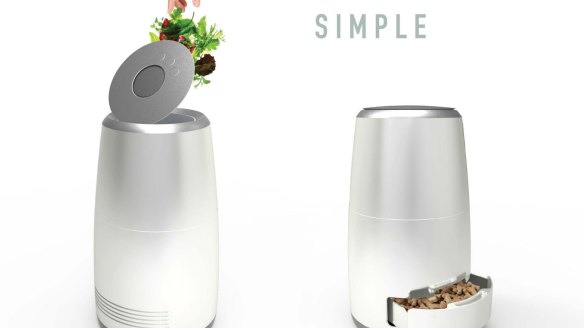Kitchen gadgets you don't yet know you need

I don't think of myself as having Luddite tendencies, but I confess that when I see refrigerators with screens set into their doors, my first thought is: "Why?"
No, don't tell me that you can stream music or look inside the refrigerator. I already have technology for that - respectively, my Amazon Echo and this app called "opening the door." Neither costs the thousands of extra dollars I would have to pay to get my hands on a Samsung Family Hub Refrigerator. And if my music streamer breaks, I can replace it without calling an appliance repair company and spending a fortune on parts.
I have similar sensations about many of the technologies on offer in today's appliances. Every major appliance manufacturer seems to be looking for a way to stick wi-fi into their products, for example. And I confess, I have occasionally fantasised about starting a pie cooking in my oven, sauntering to the other side of my 500-square-metre home for a dip in the pool, and being able to use my phone to turn down the heat on the pie after 10 minutes. Alas, in the trim 158-square-metre row-house I actually live in, I am never far enough from my kitchen to actually justify resorting to my smartphone rather than my feet.

We are at a curious moment in cooking technology. The last decade or so has probably introduced more technology potential into the kitchen than any previous decade except the 1930s. Sous vide, electric pressure cookers, fuzzy logic rice machines, induction cooktops, food processors that also cook, wi-fi controls, web connections - these things are now common enough for ordinary cooking enthusiasts to have at least heard of them, if not tried them. It is an era of enormous potential. And yet, that potential is frequently not realised, because we can't actually figure out what to do with all our new toys.
Don't get me wrong: I'm not saying that all of this new technology is useless. Far from it! I am an enthusiast for many of them. And yet, almost all these whiz-bang technologies fall prey, to some extent, to one of two problems. Either they are not actually very useful, or they are so spectacularly revolutionary that the average home cook can't figure out what to do with them.
As an example of the first, we return to the problem of wi-fi. It's not just ovens and refrigerators that are getting wi-fi, often bundled with cameras that let you see your food. It's also coffee makers, digital thermometers, crock pots and virtually any other small appliance you can imagine. I've tried a number of them, and came up against the same problem elaborated above: most of us don't get far enough from our kitchens during the cooking process to make wi-fi more convenient than just walking over to open the oven. And appliances that are designed to cook while we're away -- notably the crock pot -- tend to be optimised for cooking without interference; I don't have any crock-pot recipes that ask me to adjust the temperature halfway through.

As an example of the latter, take the electric pressure cooker. This is a genuinely major innovation, allowing not just faster cooking, but often, better cooking (I now make all my soups in the pressure cooker, for example, because it delivers a much more flavourful broth). The problem is, there aren't that many good recipes that take advantage of the pressure cooker's capabilities. And because it takes a while for the devices to get up to pressure, you can't simply lift the lid and check the food while it's cooking. So home cooks are left struggling to adapt their favourite recipes to the new technology.
The problem is even worse with the high-end versions of these devices. I have the Breville Fast Slow Pro, which allows you to vary the pressure level as well as the time. I'm very glad of the extra functionality, but since I don't really know how to use it, I'm forced to rely on the presets that come with the device. The presets are fine, but I feel like I could be getting a lot more out of my appliance if there were more recipes available designed to take advantage of its capabilities.
The problem of devices that bring too much to the table -- more than we really know how to do -- can be addressed if manufacturers are willing to put in the work. Vorwerk faced exactly this problem when it brought out the Thermomix, a high-end food processor that can also cook food in its bowl. The machine is amazingly capable, but most people don't know enough about the theory of cooking to figure out how to make the most of it. And since the machine is extremely expensive, that was a major drawback.

Over the years, Vorwerk has put a lot of effort into coming up with recipes that take advantage of the unique things these machines can do. Better yet, since the products sell through sales consultants rather than retail, the company has a large network of folks dedicated to figuring out new ways to use the machines. If you're a Thermomix owner, you can now Google for dozens of recipes for almost anything you might want to make.
And that's how manufacturers did things the last time our kitchens were up-ended. We laugh now at the extraordinary array of recipe booklets put out by manufacturers in the old days. And indeed, many of the recipes are odd. But if you'd never seen a refrigerator before or Bisquick or a stove with a thermostat that could be rapidly changed - how else would you know that pie crust cooks better when it's started at 220 degrees and then turned down, or that whipped cream could be combined with cookies and chilled to make a delicious cake-like dessert?
If manufacturers want to sell us more of their whizzy new products, then they need to start by developing recipes that call for them. American kitchens may well stand on the brink of another revolution. But before it can come, we'll need a lot more cookbooks for our grandchildren to laugh over.
Bloomberg
The best recipes from Australia's leading chefs straight to your inbox.
Sign up- More:
- Kitchen must haves